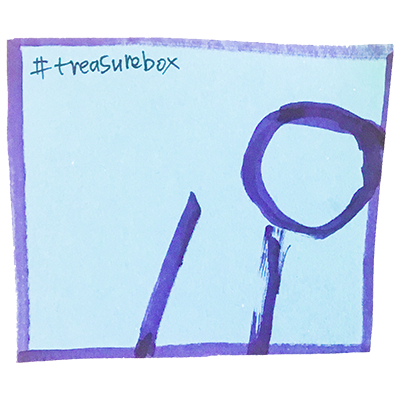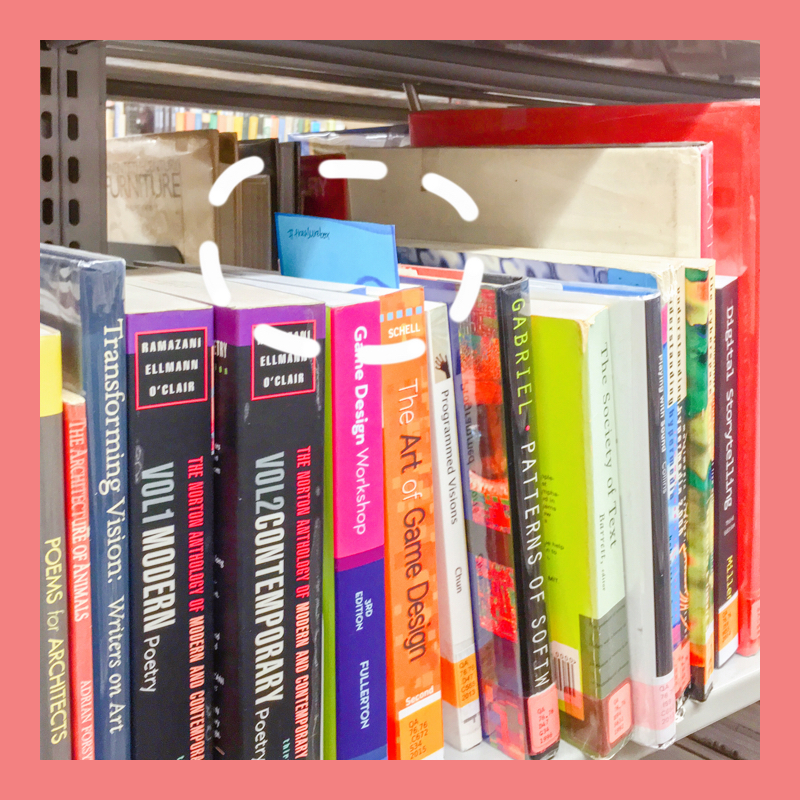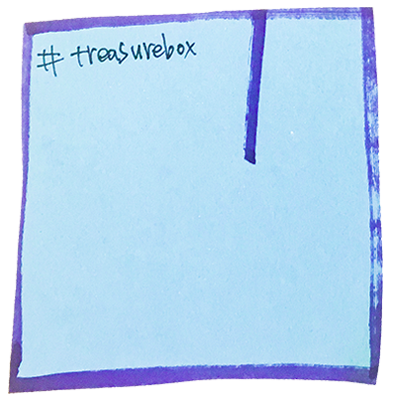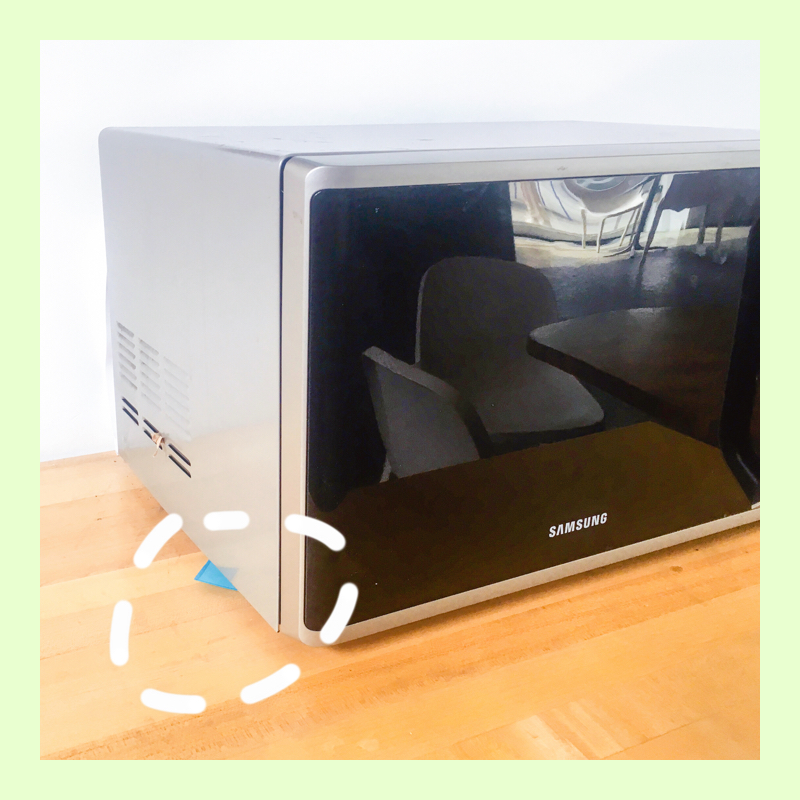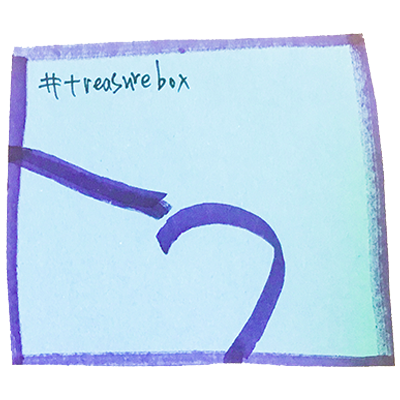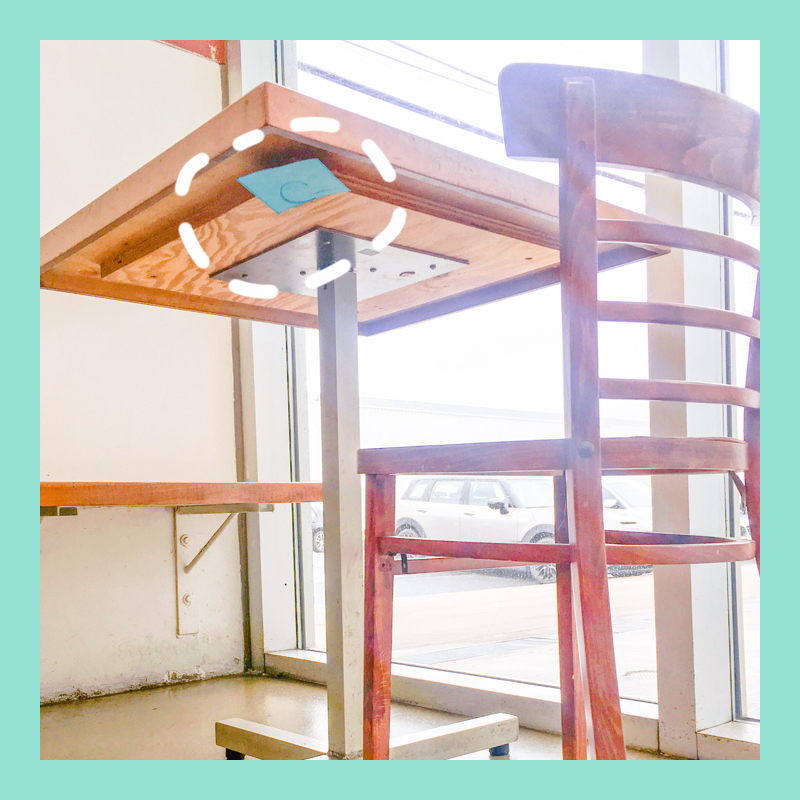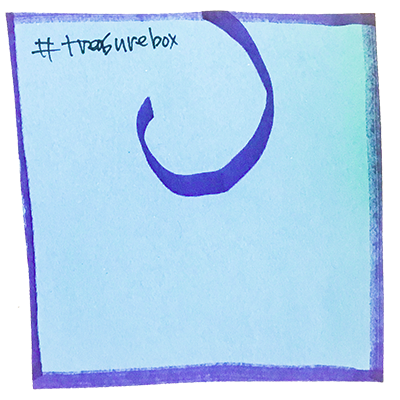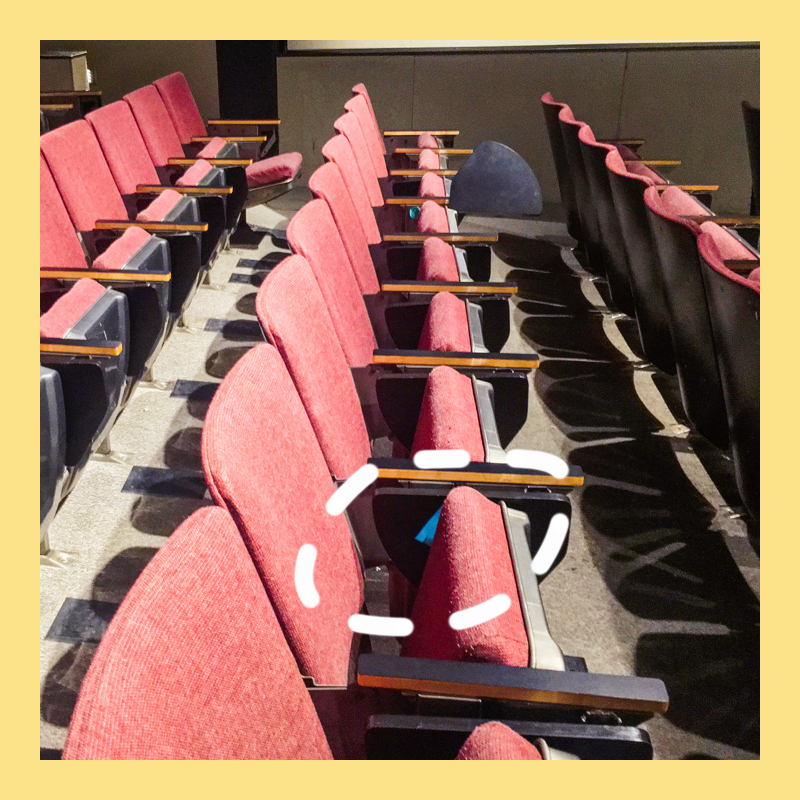GAME DESIGN · EXPERIENCE DESIGN
Treasure Box
REAL-WORLD ADVANTURE GAME
Treasure Box is an adventure game for new students to explore the campus and make new friends through play. Players in this game will practice communicating with strangers and know their schoolmates’ cultural backgrounds.
OVERVIEW
GOAL
Create a real-world adventure game for 2 or more people at CCA that generates meaningful social interactions and integrates into their daily routine.
📅 TIME
Mar 2019
👩🏼🏫 INSTRUCTOR
Catherine Herdlick
✅ MY JOBS
Research
Ideation
Design
Guide
1. CONCEPT
Target Player Group
We wanted to design an adventure game for new international students at CCA.

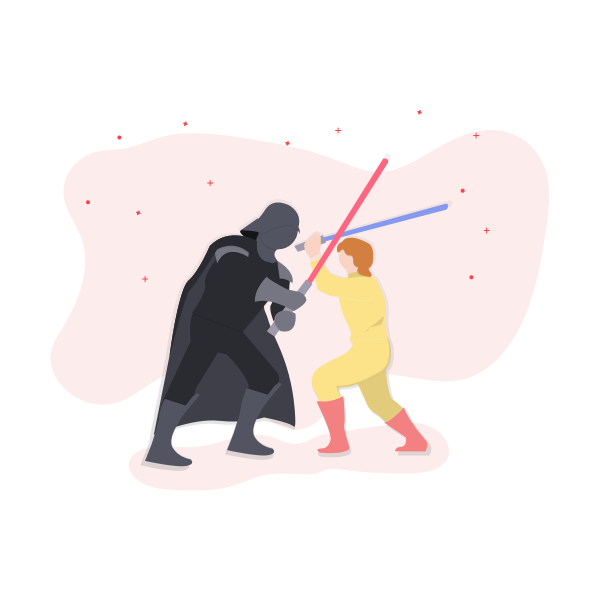
Initial Idea
Two groups compete for a treasure box. Through looking for the box, players will practice the necessary skills for their following study and life at CCA.
Magical Circle
The passerby has opportunities to get involved in the game. They may be invited to interact with the players.
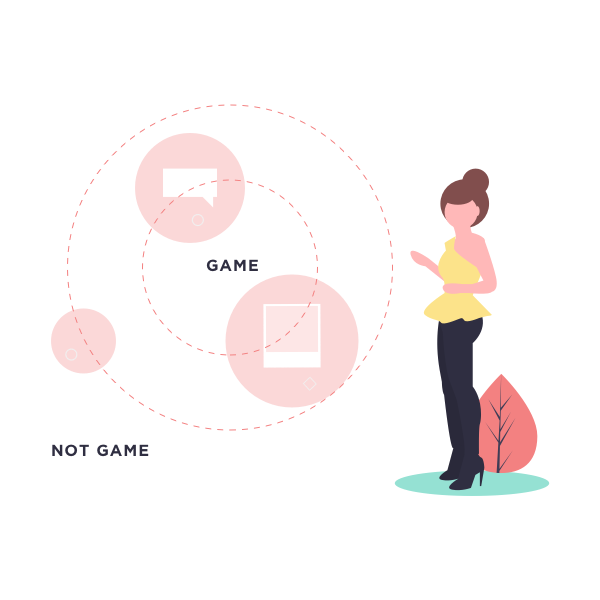

Core Loop
Get a clue and find the next clue, or take the adventure and get the next clue.
Meaningful Choices
Players choose different options to enter different difficulty levels or spend different time periods. The choices are irreversible.


The Win or End State
The group that the one who opens the treasure box belongs to is the winner. Because there may be undercover teammates, they will reveal their real identities after getting the treasure box.
2. RESEARCH
SECONDARY RESEARCH
We spent some time watching Korean and Chinese reality shows which contains various kinds of adventure games like Running Man and Go Fighting!. Through watching, we focused on the levels setting, the players’ behaviors and their reactions.
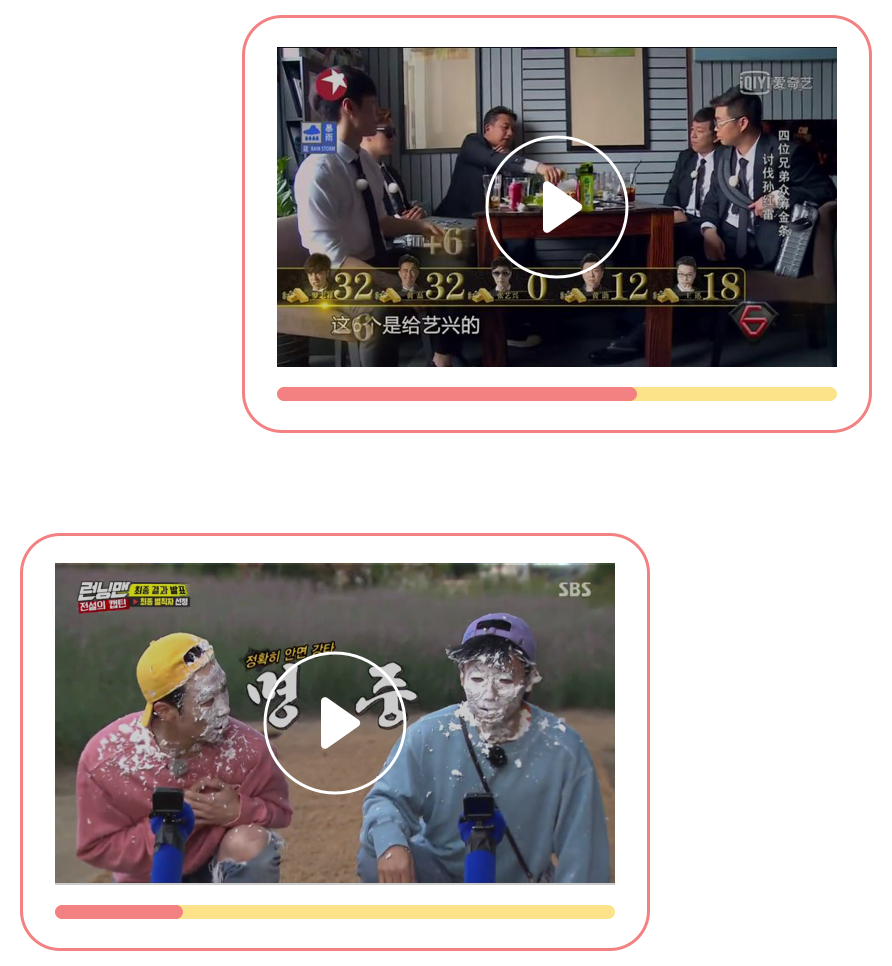
INTERVIEWS
My Responsibility: Interviewing
Teammate's Responsibility: Note Taking
GOAL
Define “meaningful social interaction” based on the interviews.
WHO
3 new graduate students
2 freshmen
1 transferred student
INTERVIEW QUESTIONS
- Can you describe a typical school day as detailed as possible?
- What challenges did you have in the first few weeks?
- How did you adapt to the new environment?
- Can you give any examples of social interactions in your daily life?
"I like the teamwork in the beginning. Because it’s a fast way to make new friends. Also, I can learn about team members’ backgrounds through teamwork."
INSIGHTS
My Responsibility: Summarizing
GREETINGS
- With friends
- With cashiers
- With Uber/Lyft drivers
CHATTING
- Get information
- Give information
- Exchange information
TEAMWORK
- A fast way to make new friends
- Learn about team members’ backgrounds
meaningful
meaningless
LISTEN TO COMPLAINTS
Need more positive energy rather than negative energy
SOCIAL MEDIA INTERACTIONS
- Collect “likes”
- Reply text messages when the topics are boring
DEFINITION
meaningful social interaction
(behavior)
The social interactions that benefit students’ social connections and helps them adapt to the new environment.
3. DESIGN
TARGET PAYLER GROUP
New International Students at CCA
PURPOSE
Exploring the Campus
Making New Friends
Practicing Communicating with Strangers
THE FLOW
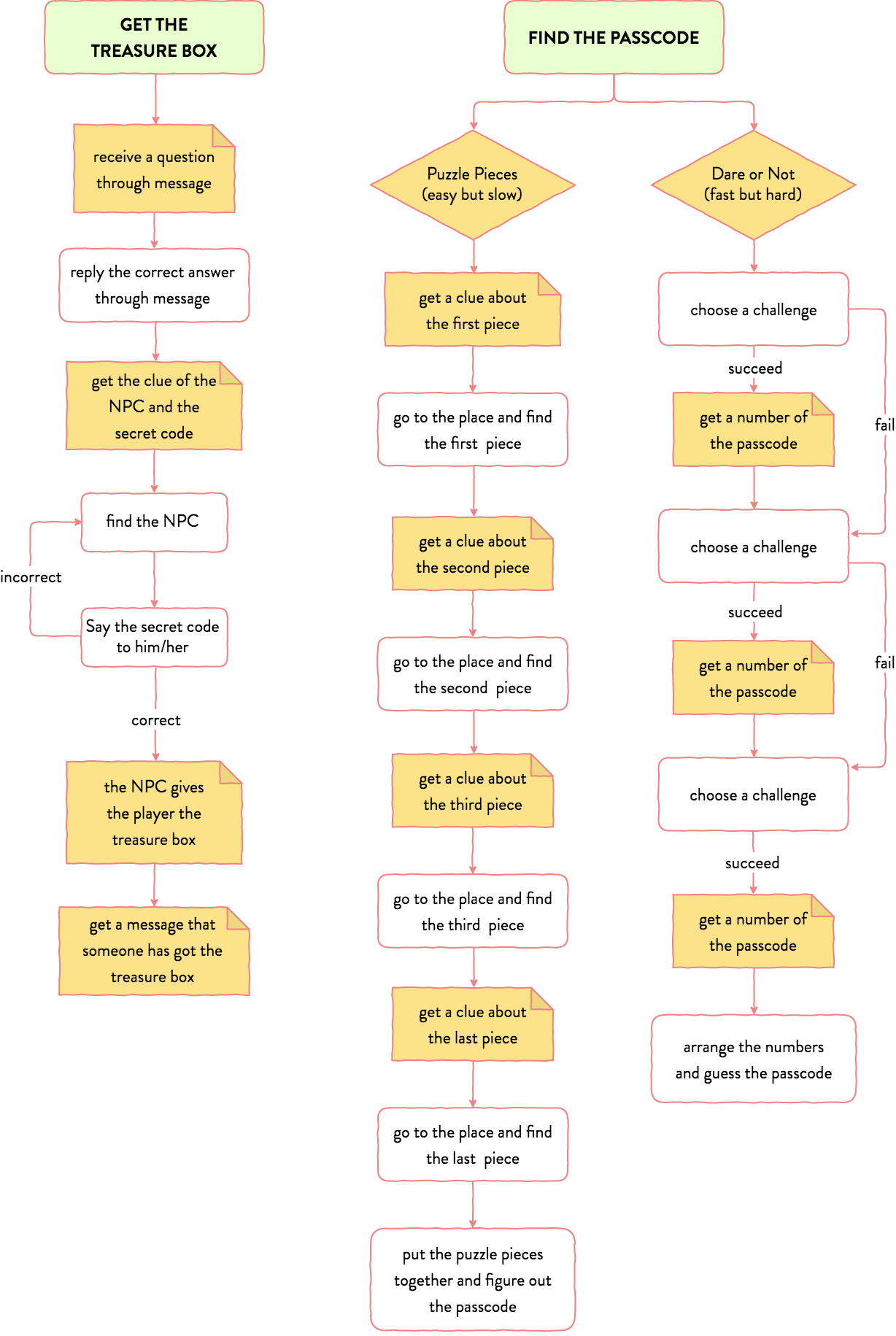
THE WIN STATE
The group that the one opens the treasure box belongs to is the winner.
STORYBOARDS
My Responsibility: Drafting
Teammate's Responsibility: Sketching
SESSION 1. FIND THE TREASURE BOX
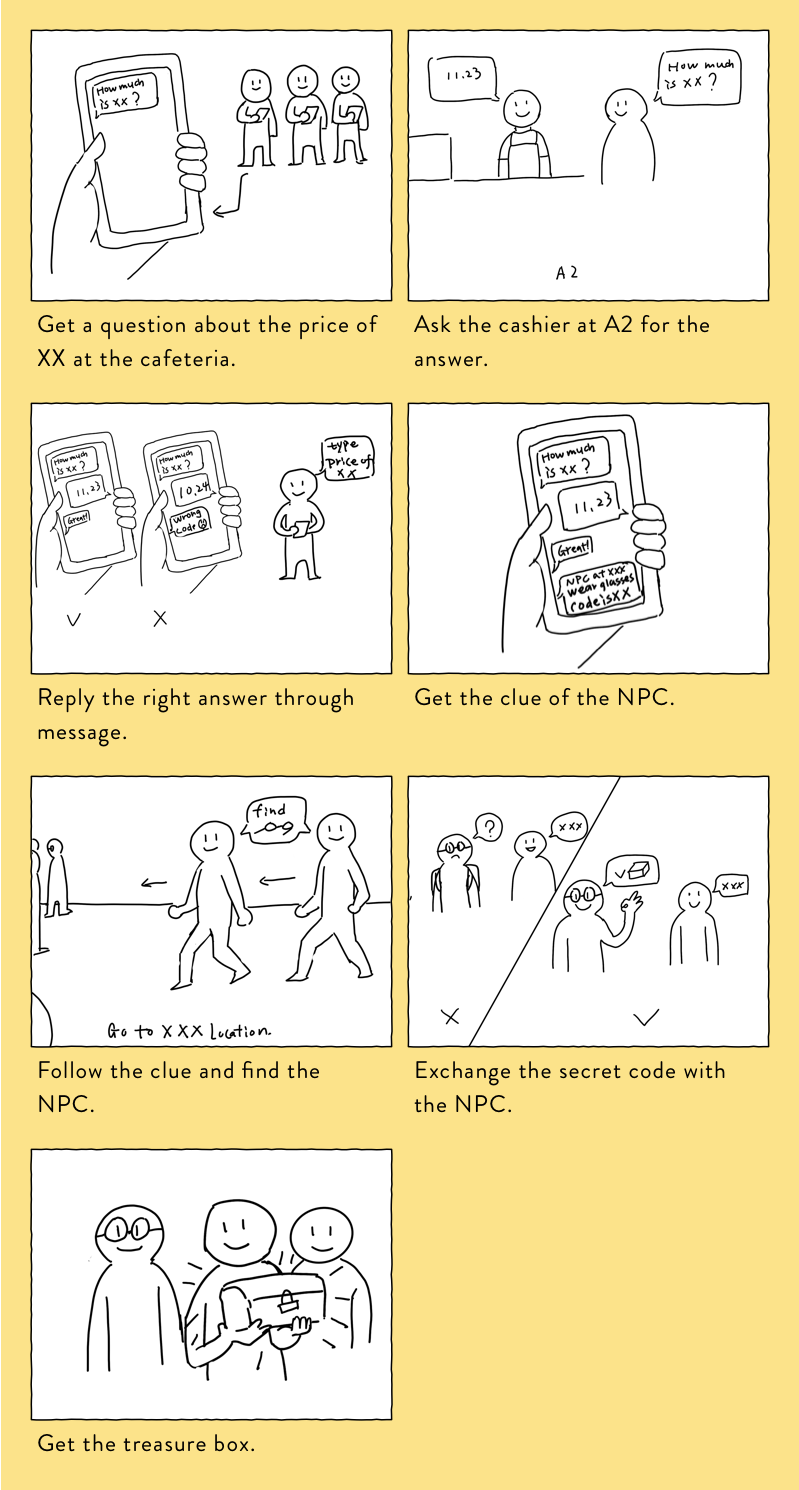
SESSION 2. FIND THE PASSCODE
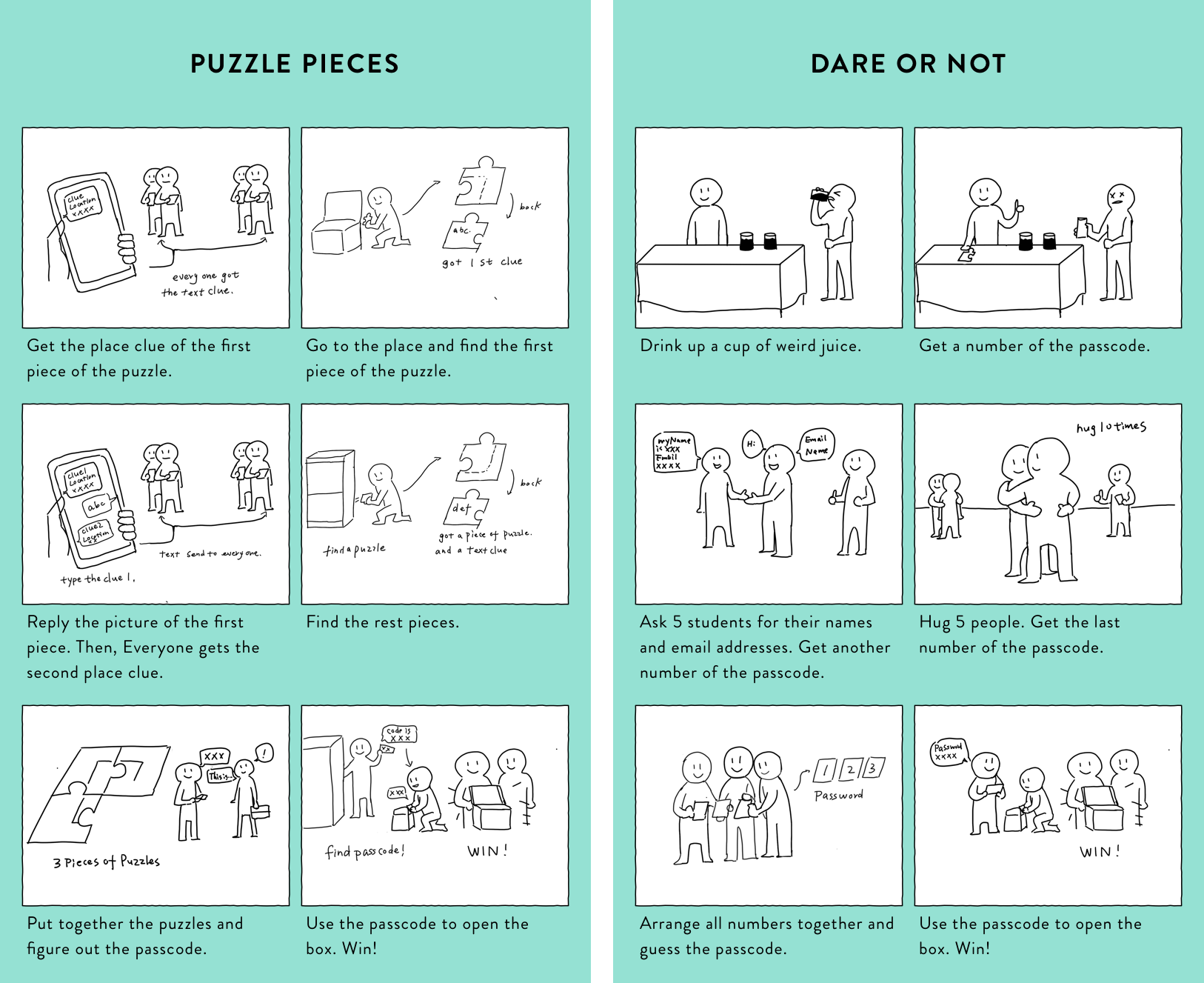
EXPERIENCE MAP
My Responsibilities: Analyzing the Experience and Drawing the Map
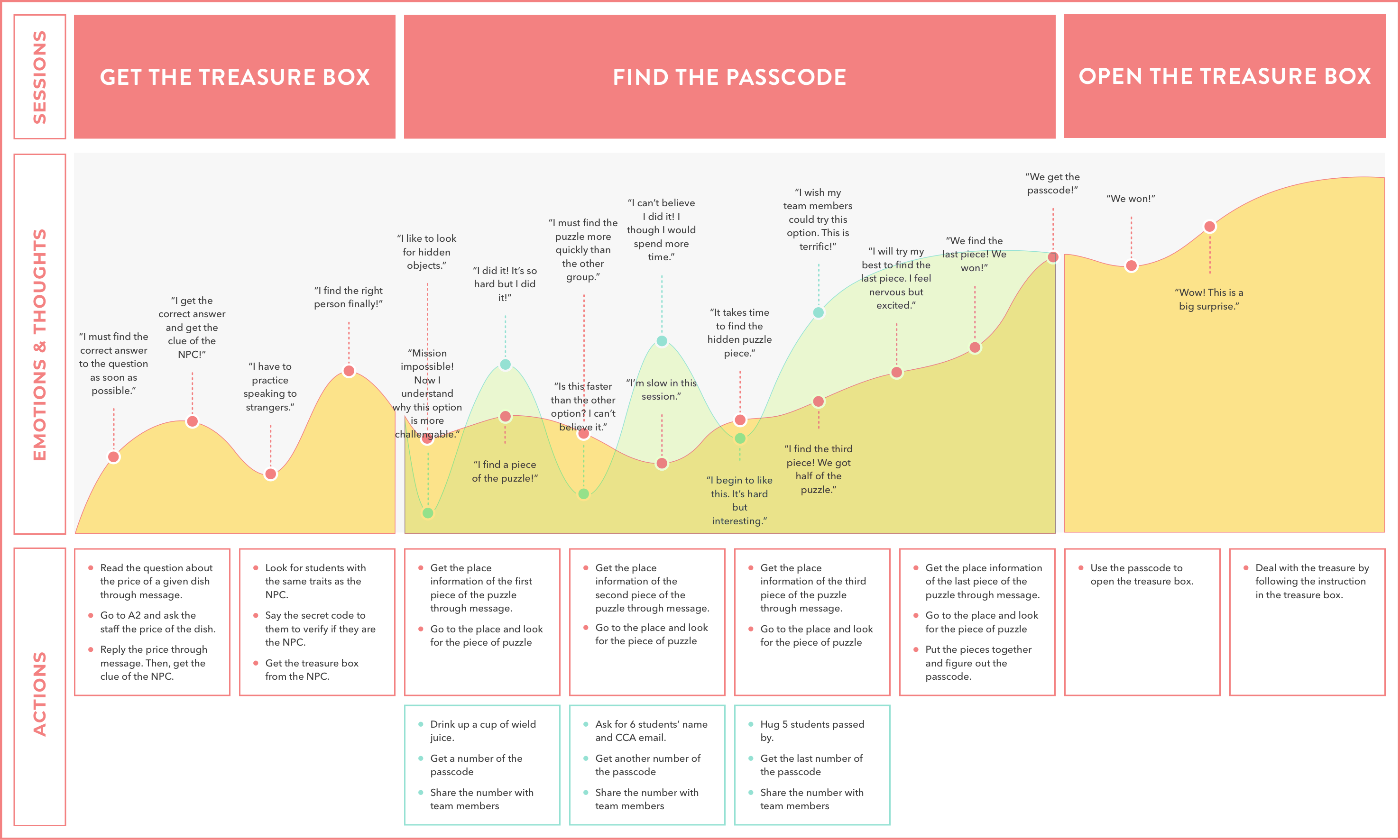
4. PRODUCTION
POLISHING
We had several discussions and made some changes to the game before the production. We hope it would be more welcoming for new students, so we lowered the difficulty level of the second session. To be specific, players will make new friends by asking strangers to draw the map of their home country instead of asking for their name and email address. Also, they are encouraged to take selfies with strangers instead of hugging them. The modification will create more meaningful interactions and bring memorable experiences to the players.
MESSAGE SCRIPS
My Responsibility: Copy Writing
We used a message system to send group messages to the players and respond to particular classes of messages. Therefore, we could pay more attention to observing the players and assist them in the playtest.
WARM-UP
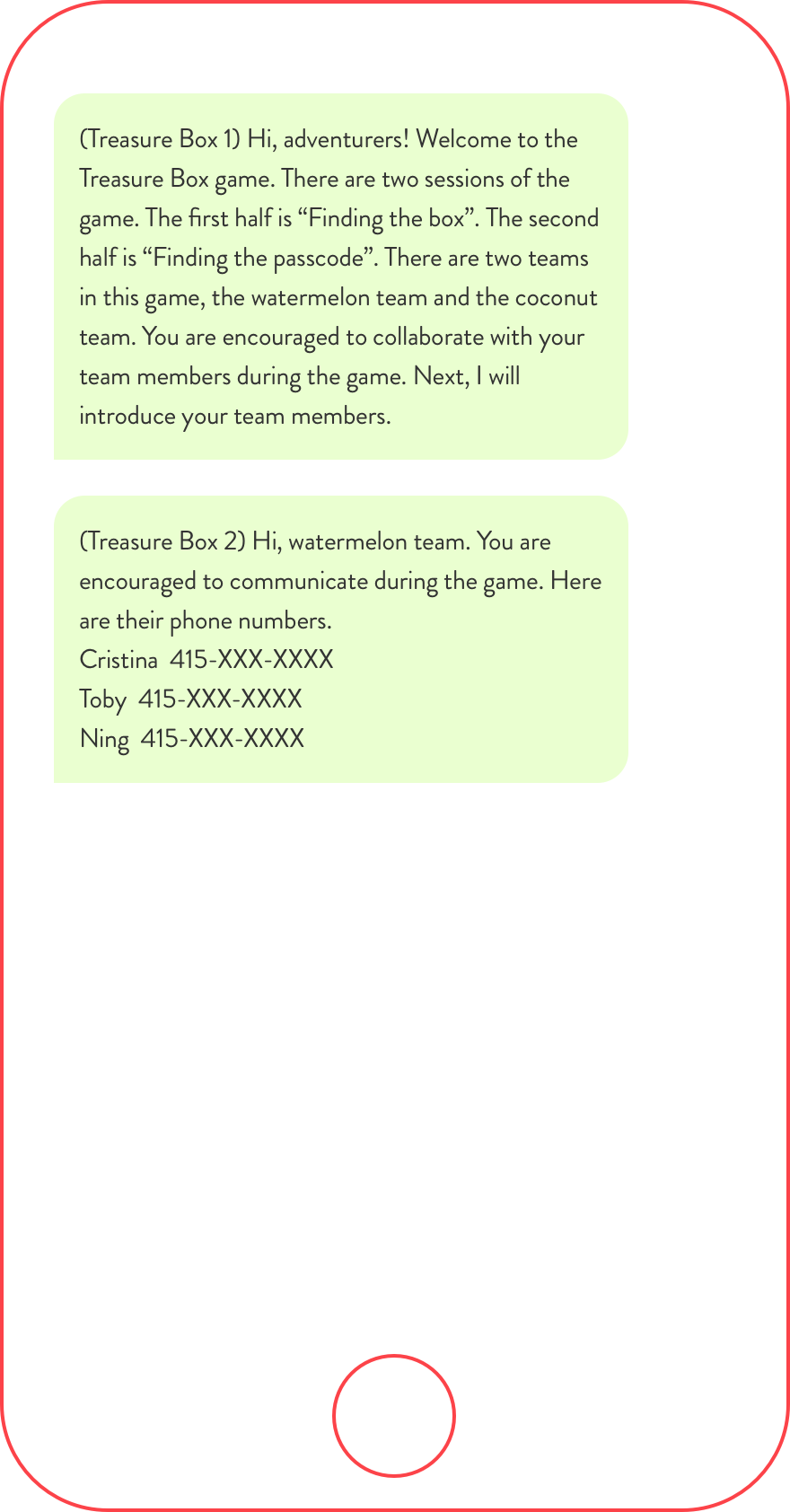
SESSION 1
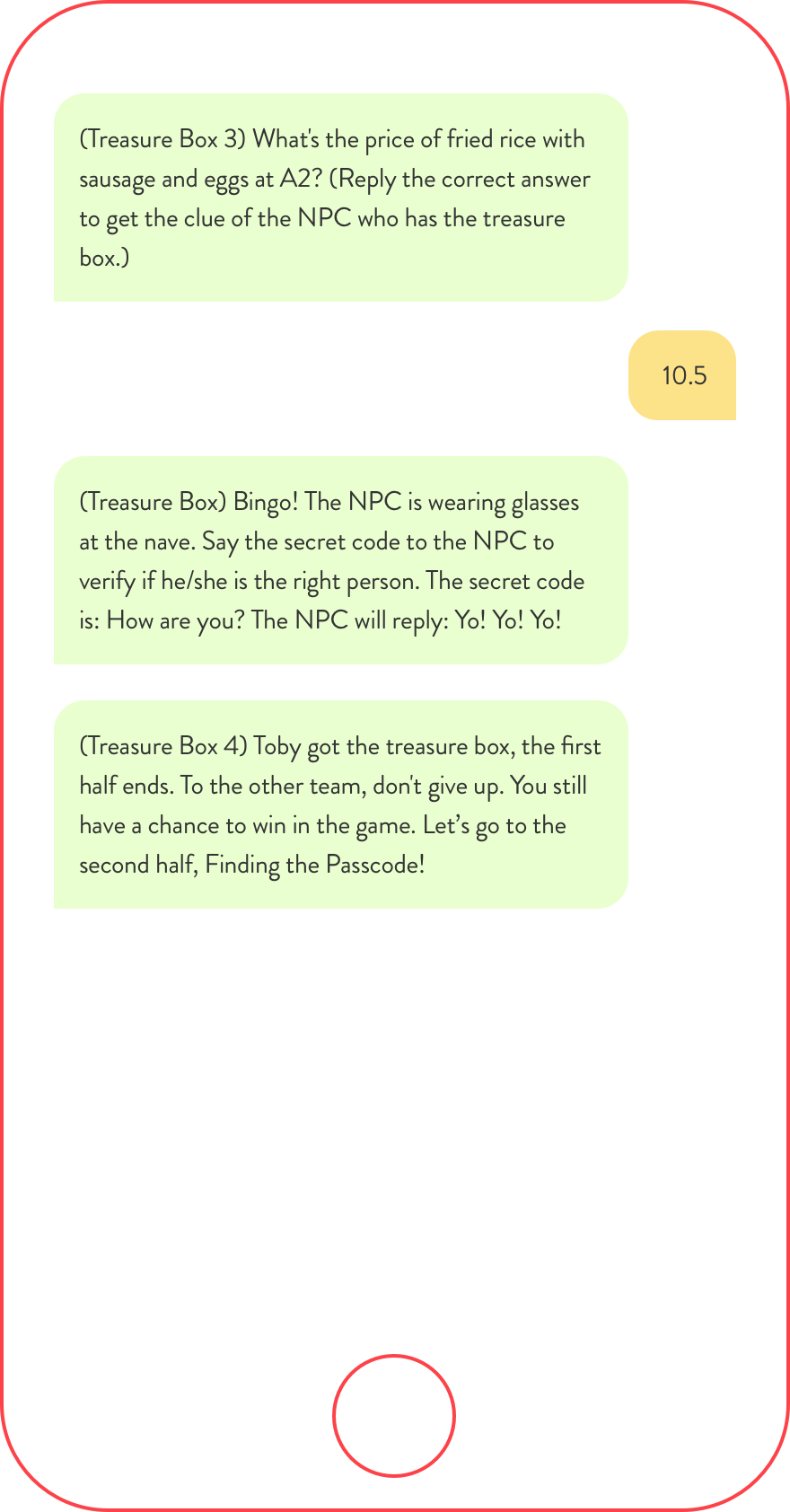
SESSION 2. PUZZLE PIECES
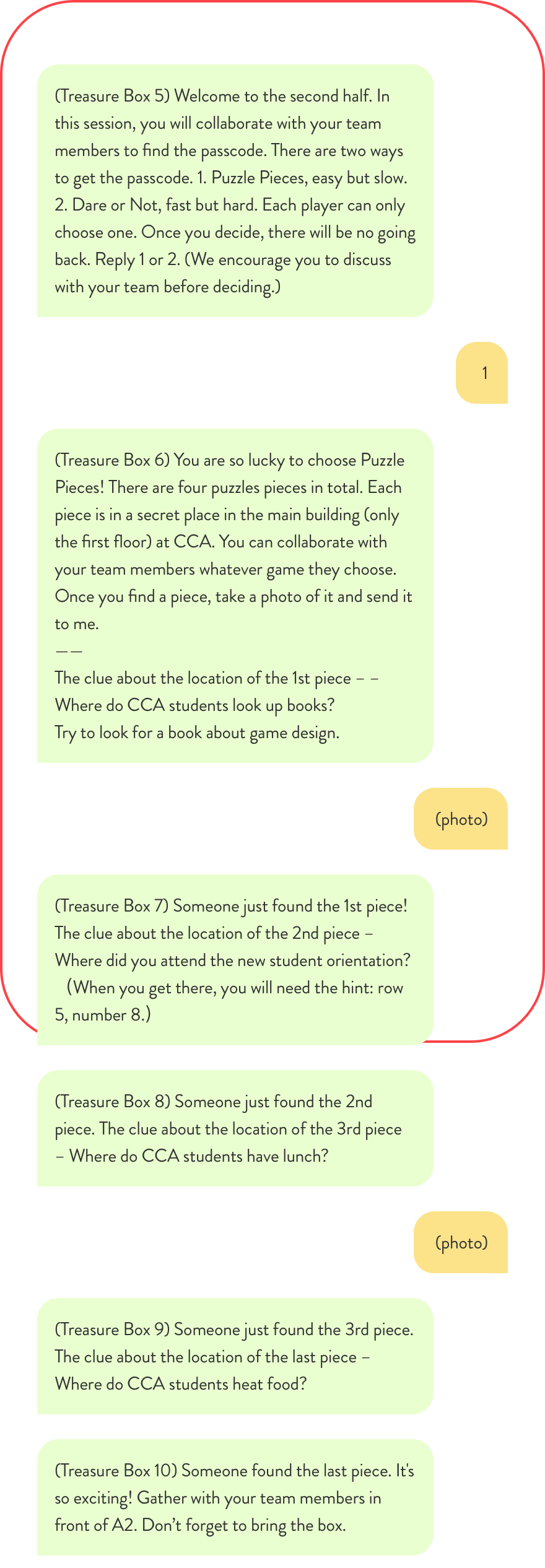
SESSION 2. DARE OR NOT
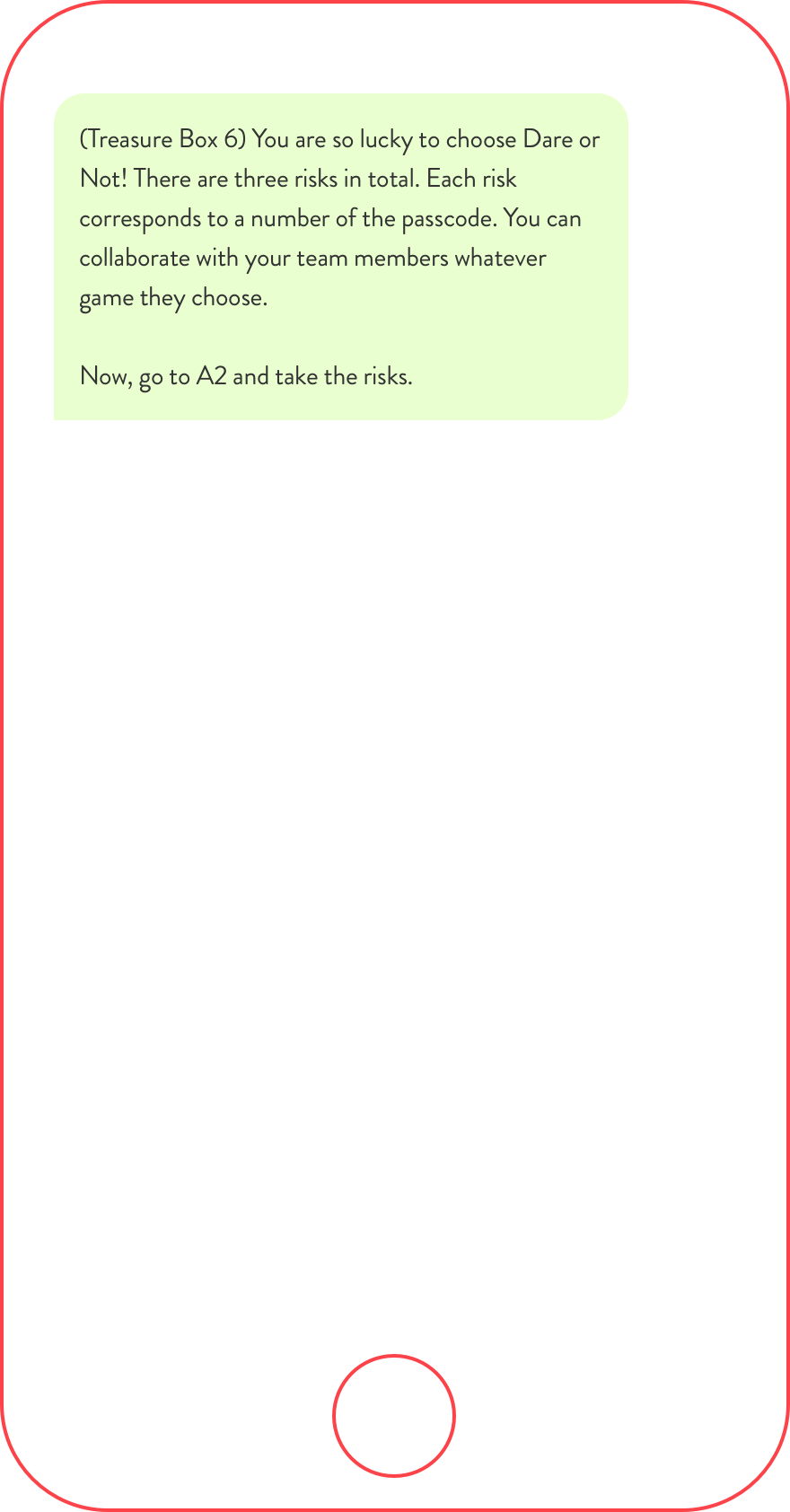
MATERIAL PREPARATION
My Responsibility: CoDesign the Puzzle Cards
Teammate's Responsibilities: CoDesign the Puzzle Cards
Finally comes to the production stage. There are no material needs for Session 1: Find the Treasure Box and Session 2: Dare or Not to install. So, we skip to the Session 2: Puzzle Pieces. Here are the questions that need to be considered.
- What numbers make up the passcode?
- What’s the sorting of the numbers?
- How to arrange them on the puzzle?
To answer these questions, we found that the third question has the highest priority. So, we were supposed to figure out what the puzzle looks like first.
How to arrange the numbers on the puzzle?
There are four pieces in total.
The passcode is consist of three numbers.
So, each piece is supposed to have parts of two numbers.
We encourage the players to explore more sites on campus.
So, players are supposed to get more pieces.
The players could only find one piece at a time.
So, the numbers on a piece are supposed to be hard to recognize.
Based on these considerations, here comes a new question:
What numbers look similar if some parts are covered?
After a short discussion, we listed these numbers that the shapes are not that unique: 1, 3, 4, 7, 8, 9. Then we collected 3, 4, 9 to be the numbers of the passcode. There were also alternatives like 4, 7, 8 and 7, 8, 9. Since we have decided the three numbers, we started to draft the arrangement.

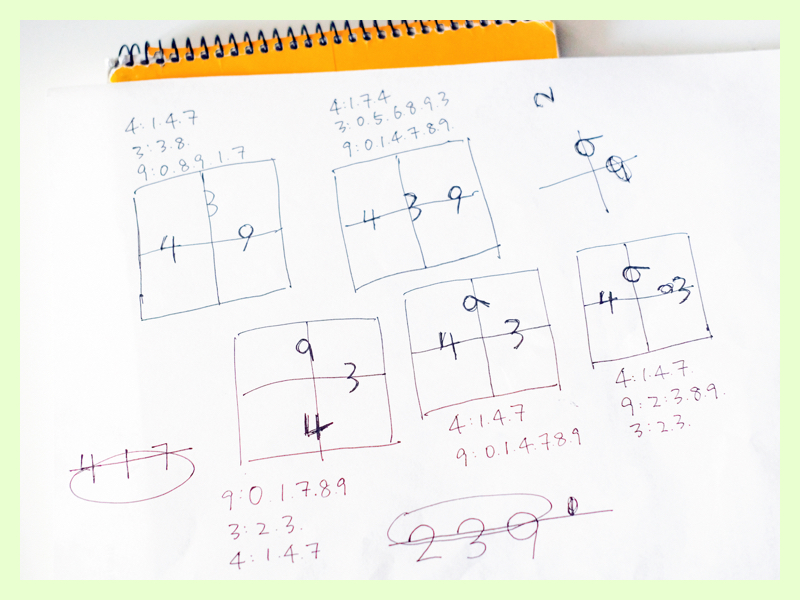

INSTALLATION
My Responsibility: Decide the Sites
Teammate's Responsibilities: Decide the Sites and Install the Puzzles
The purpose of this session is to encourage students to explore the campus. So, we chose the sites that they would frequently go in the future; Simpson Library where students read books and study, A2 Cafe where students usually have lunch, Campus Center where students heat food and meet new friends, and Timken Hall where hold new student orientation.
